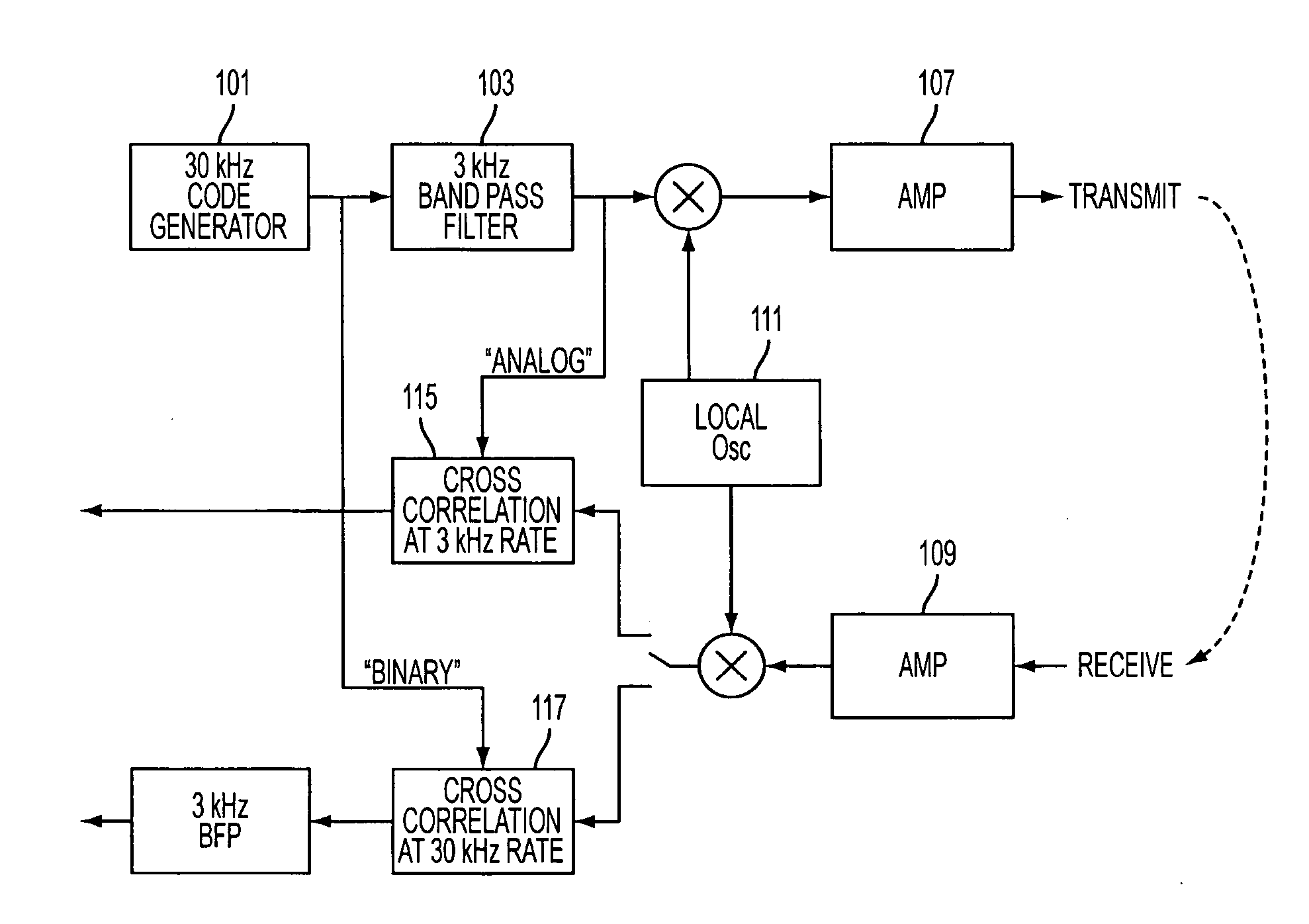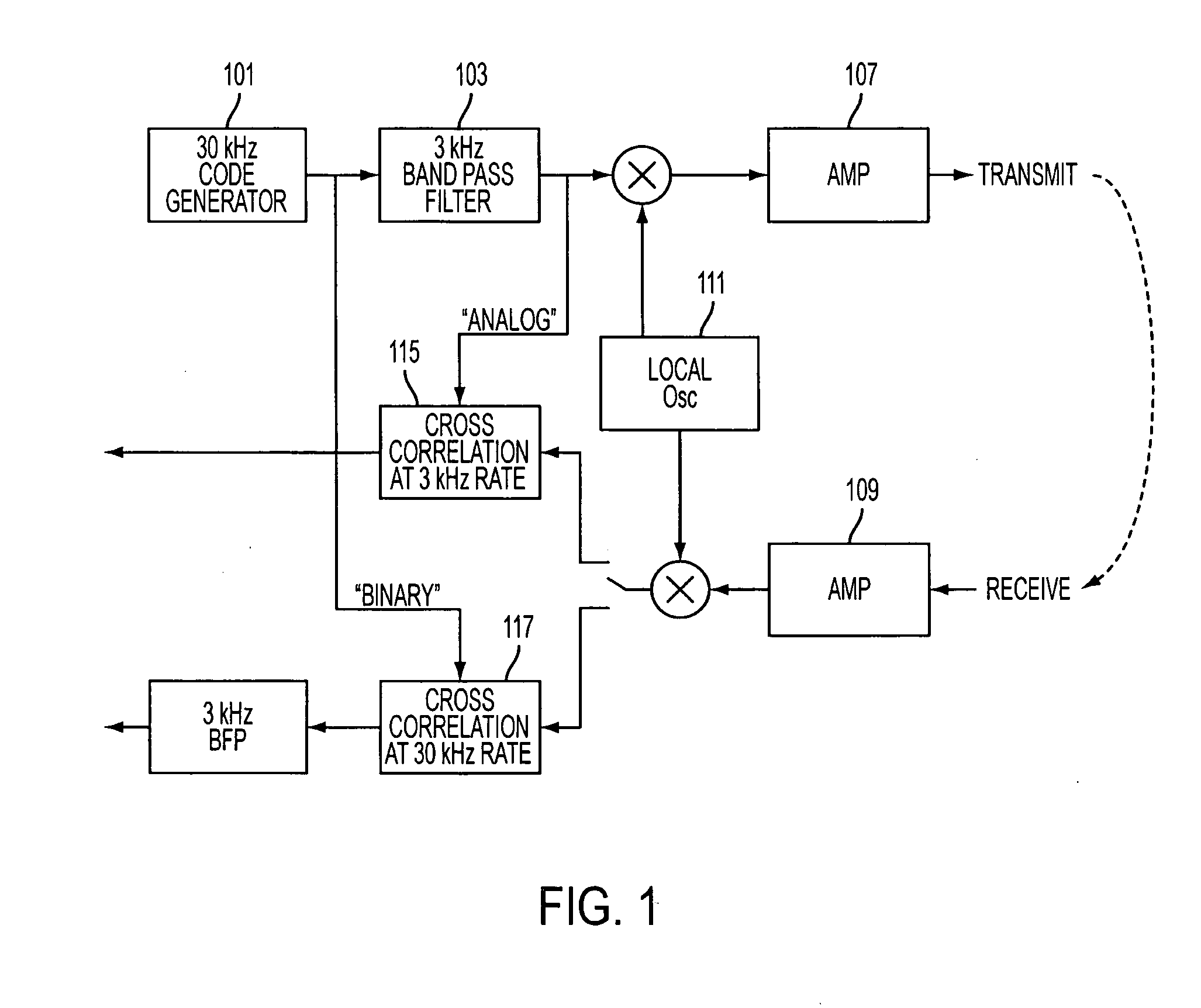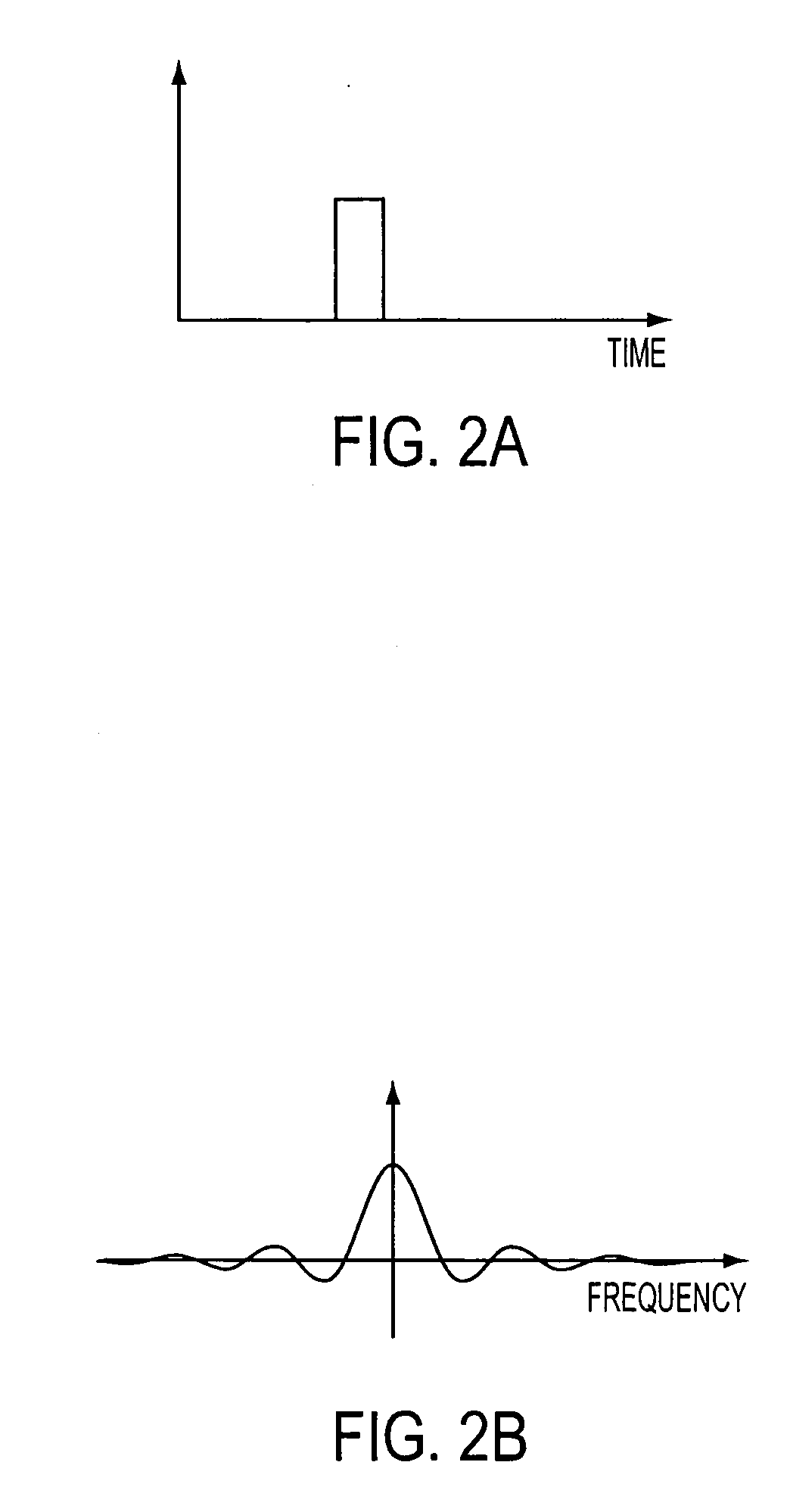Suppressed feature waveform for modulated sonar transmission
a sonar transmission and feature waveform technology, applied in the field of encoded sonar waveform production and use, can solve the problems of interference among the primary lobes of filtered pulses, lack of regular features, and inability to detect such encoded pulses,
- Summary
- Abstract
- Description
- Claims
- Application Information
AI Technical Summary
Benefits of technology
Problems solved by technology
Method used
Image
Examples
Embodiment Construction
[0018] An embodiment as depicted in FIG. 1 generally operates as follows. A code generator 101 produces a pulse sequence at 800 kHz, preferably with the desired complementary properties. The pulse sequence is then passed through a bandpass filter 103 that limits the frequency bandwidth of the pulses to 80 kHz, thereby modifying the pulse sequence by changing the pulse shape and increasing the pulse width, particularly in the primary lobe. Because of the change in shape and width, the filtered pulses have significant interference among themselves, and no longer display any observable regularity. This irregular output from the bandpass filter 103 is a baseband signal that is then used to modulate a carrier wave generated by a local oscillator 111. The modulated carrier wave is then amplified in amplifier 107 before transmission from a transducer.
[0019] After reflection from an object some distance from the sonar transmission apparatus, a return signal pulse, received either by the tr...
PUM
 Login to View More
Login to View More Abstract
Description
Claims
Application Information
 Login to View More
Login to View More - R&D
- Intellectual Property
- Life Sciences
- Materials
- Tech Scout
- Unparalleled Data Quality
- Higher Quality Content
- 60% Fewer Hallucinations
Browse by: Latest US Patents, China's latest patents, Technical Efficacy Thesaurus, Application Domain, Technology Topic, Popular Technical Reports.
© 2025 PatSnap. All rights reserved.Legal|Privacy policy|Modern Slavery Act Transparency Statement|Sitemap|About US| Contact US: help@patsnap.com



